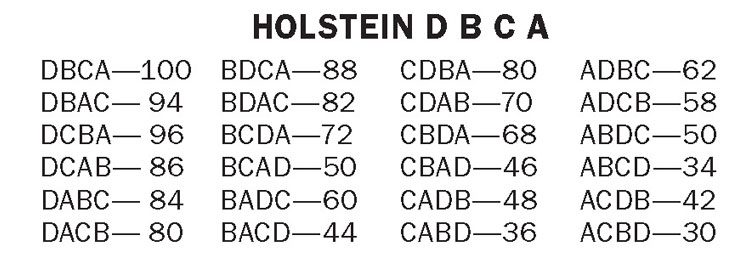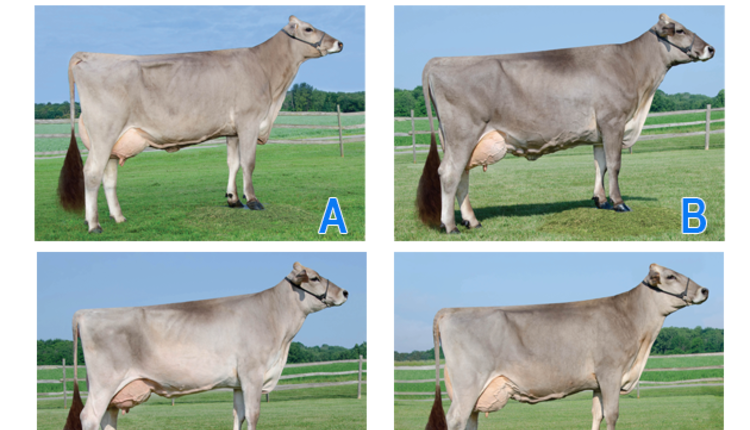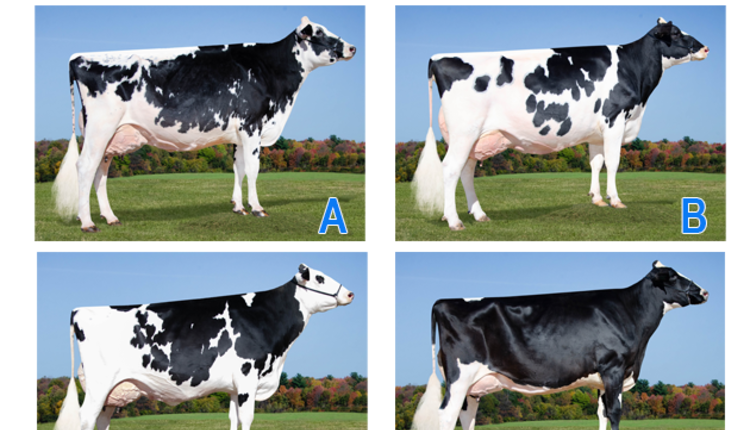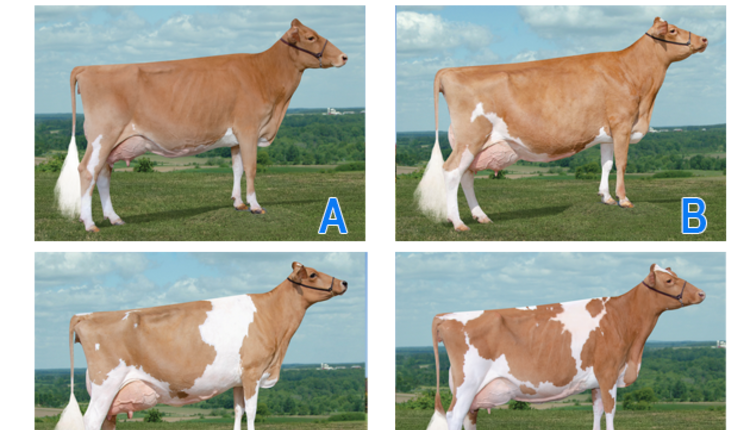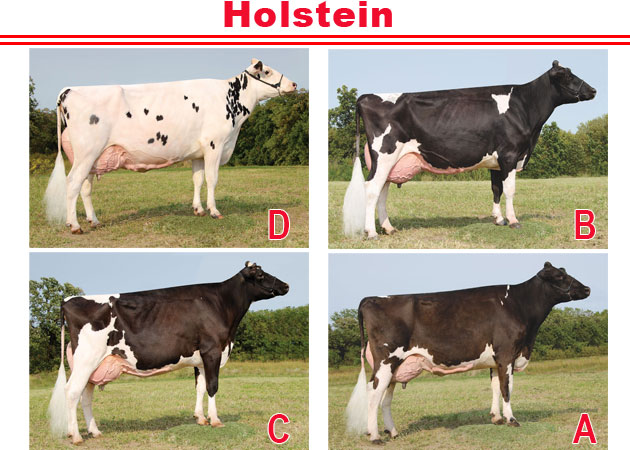
HOLSTEIN — D B C A
D’s balanced frame and best udder in this class handily sort her to the top. In my top pair, the white D has a definite advantage over B in udder. D has a more youthful udder — holding the udder floor higher above the hock, a higher rear udder attachment, a longer fore udder that blends more smoothly into the body wall, and teats more centrally placed on all four quarters than B. Moreover, D displays less quartering when viewed from the side, has more veination, and more uniform width at the top of the rear udder than does B. Moving to the barrel, D has more depth and circumference of both the fore and rear rib. I admit that B is wider in the rump and lower in the pins than D.
In a close middle pair of similarly made cows, B gets the nod for three reasons. First, B is more open in the rear rib and has more mass to the flank. Second, B has more width, bloom, and capacity in the rear udder than C. Finally, B is less puffy in the right rear hock. Granted, C has more definition of seam at the top of the rear udder.
In my final pair, C has a clear-cut advantage in angularity. C is sharper at the point of withers, is more prominent over the topline and rump, and is more incurving in the thigh than A. Moving to the udder, C is wider in the rear udder attachment, and I prefer C’s texture, quality, and shape to the rear udder. I concede that A has more width and substance in the front end and is less puffy in the right rear hock than C. A is too narrow in the rear udder attachment and not open enough to merit a higher placing.
About the Judge . . . Elizabeth Hall

